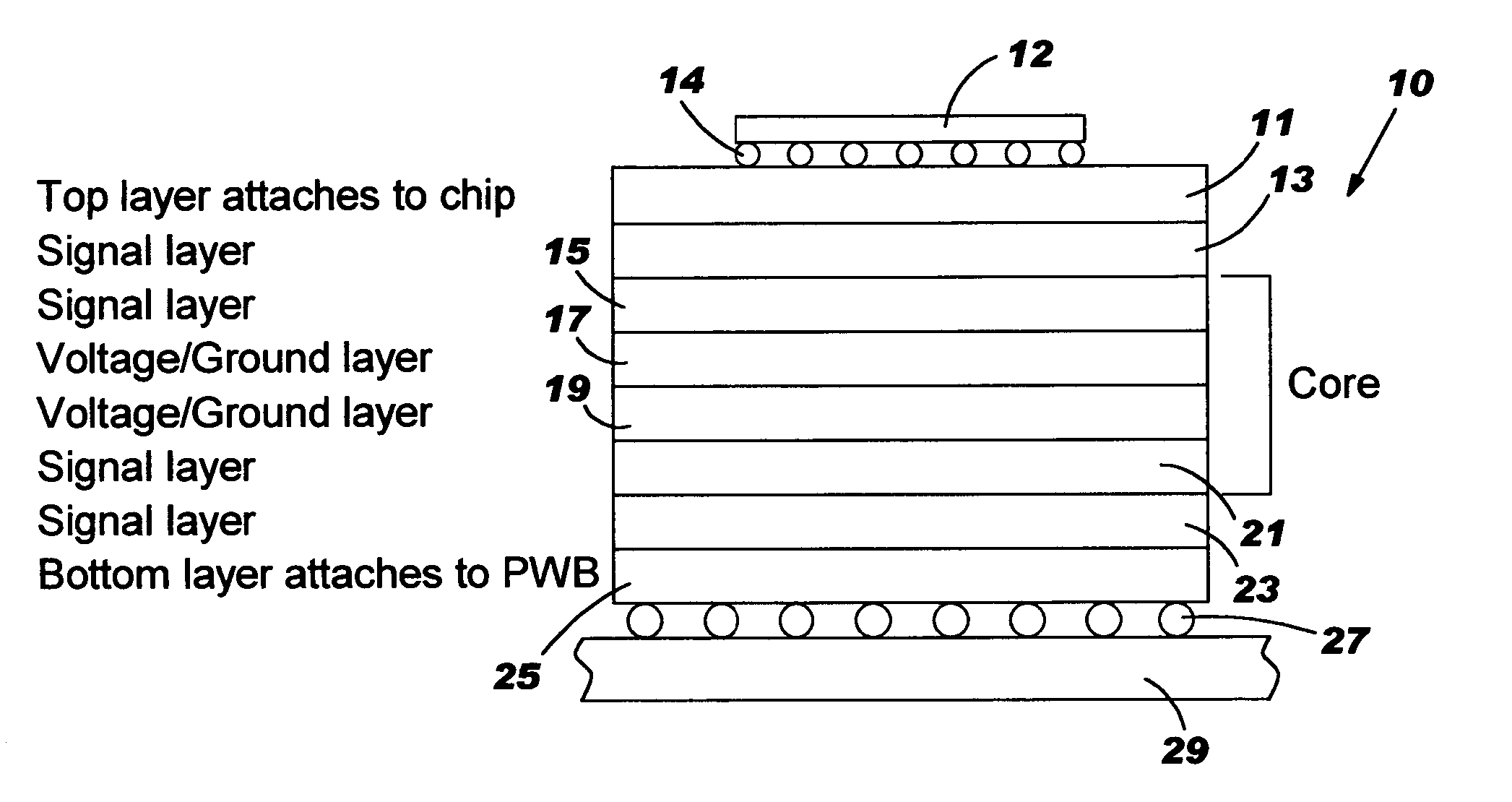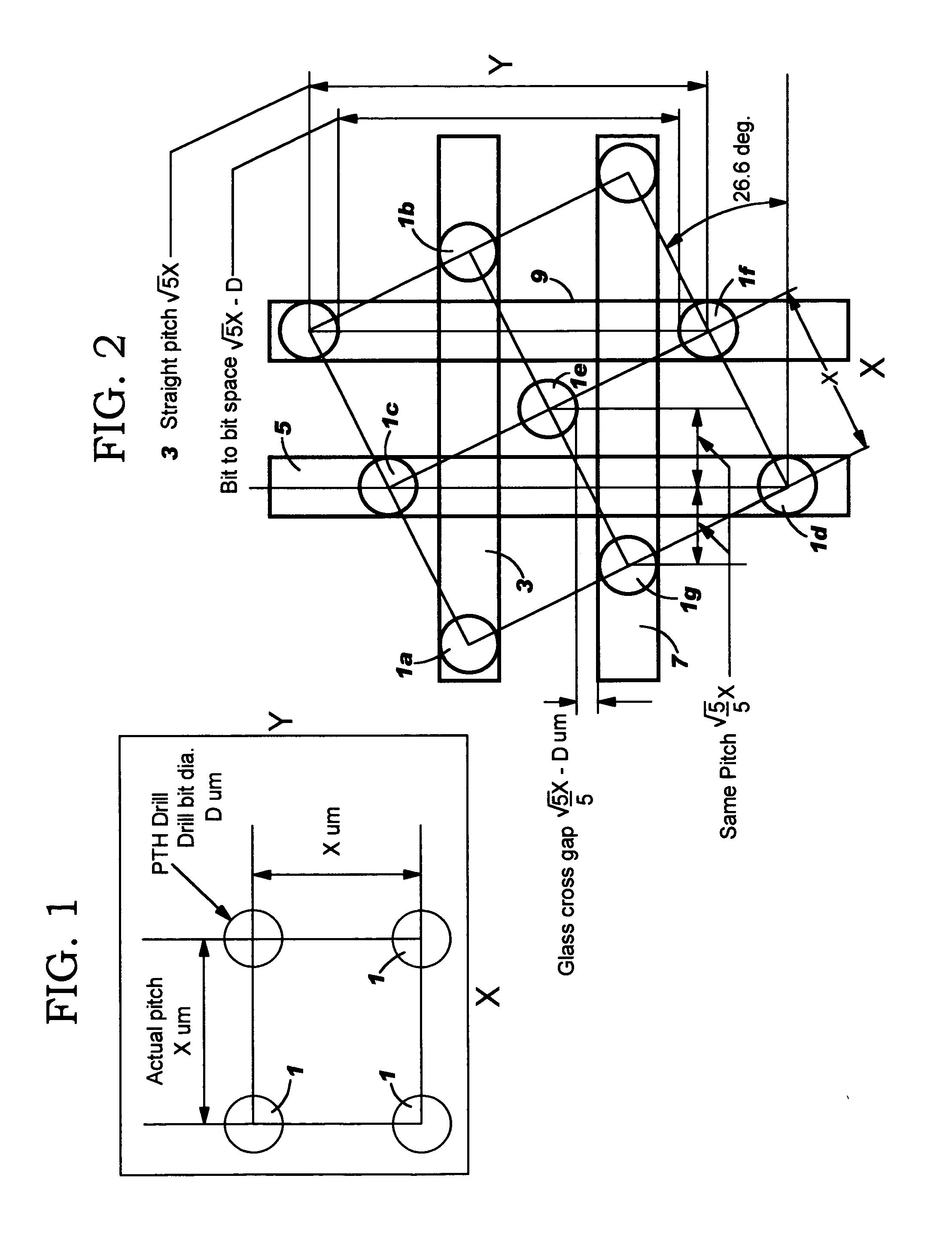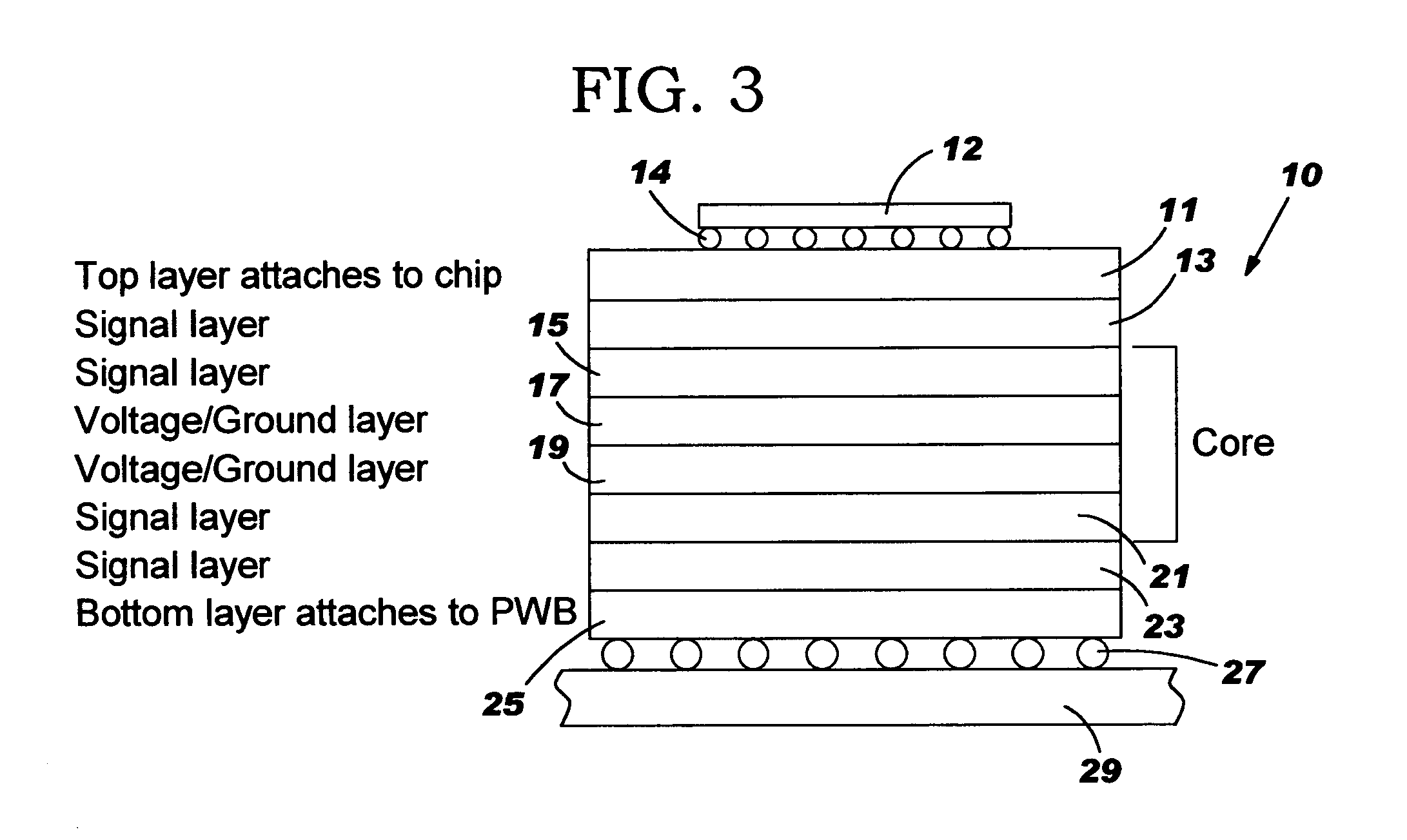High density microvia substrate with high wireability
a microvia substrate and high-density technology, applied in the direction of printed circuit aspects, printed circuit non-printed electric components, semiconductor/solid-state device details, etc., can solve the problems of difficult to construct mutually segregated conductors to connect carrier lines to each terminal, lines with terminals, and difficult to connect carrier terminals. and terminals. carrying terminals and lines are particularly burdensome, so as to achieve high-density pth
- Summary
- Abstract
- Description
- Claims
- Application Information
AI Technical Summary
Benefits of technology
Problems solved by technology
Method used
Image
Examples
Embodiment Construction
[0022] With reference to FIG. 1, there is shown a pattern of circles or holes 1 each representing a typical PTH with drill bit diameter Dim. Typically, the PTHs are plated to form a PTH grid arrangement. As shown, the holes 1 are arranged in an X-Y grid arrangement. In such arrangement, the X and Y lines of PTHs 1 are aligned with the direction of the glass fibers in the layers of the multilayer chip carrier. The fibers in the layers of such structure are typically woven m a mesh-like pattern with the fibers running parallel to one another and in both the X and Y direction generally intersecting orthogonally or at approximately at 90°. The actual pitch Xμm of holes is shown for both the X and Y directions. As used herein “orthogonal” means 90° or some minor variation one way or another.
[0023] The PTHs 1 in FIG. 1 would typically have a diameter of 150 μm and would be 300 μm or higher apart in both the X and Y direction. This results in a 450 μm or higher pitch which gives a density...
PUM
| Property | Measurement | Unit |
|---|---|---|
| angle | aaaaa | aaaaa |
| diameter | aaaaa | aaaaa |
| diameter | aaaaa | aaaaa |
Abstract
Description
Claims
Application Information
 Login to View More
Login to View More - R&D
- Intellectual Property
- Life Sciences
- Materials
- Tech Scout
- Unparalleled Data Quality
- Higher Quality Content
- 60% Fewer Hallucinations
Browse by: Latest US Patents, China's latest patents, Technical Efficacy Thesaurus, Application Domain, Technology Topic, Popular Technical Reports.
© 2025 PatSnap. All rights reserved.Legal|Privacy policy|Modern Slavery Act Transparency Statement|Sitemap|About US| Contact US: help@patsnap.com



